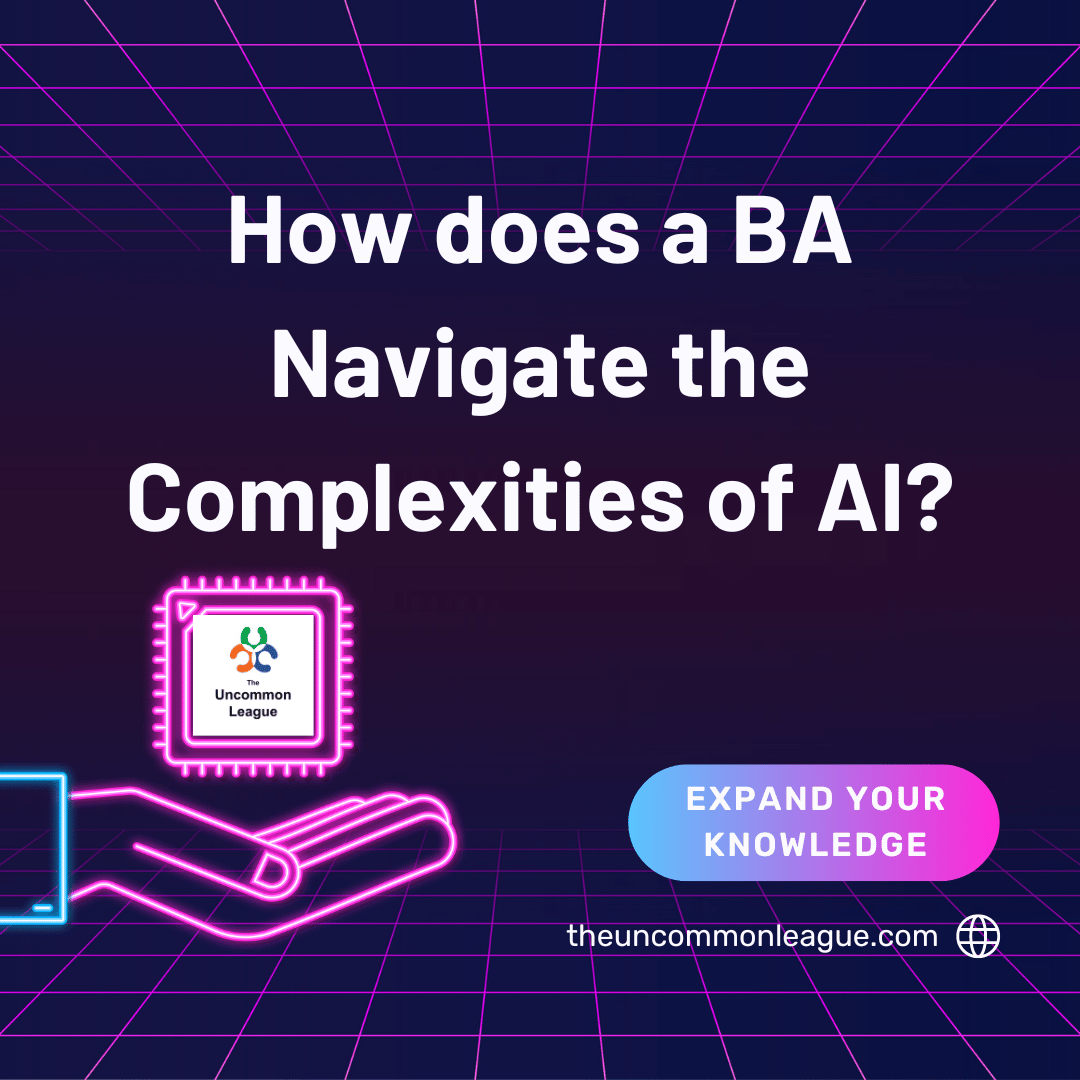How does a Business Analyst Navigate the Complexities of AI Integration?
As businesses increasingly turn to AI technologies to gain insights, optimize processes, and drive innovation, the role of the business analyst has evolved to navigate the complexities of AI integration effectively. In this article, we explore how business analysts can navigate the intricate intersection of AI integration in business analysis, understanding the challenges, opportunities, and best practices involved in leveraging AI for informed decision-making and strategic planning.
The Role of Business Analysts in AI Integration
Business analysts play a pivotal role in bridging the gap between business objectives and technological solutions. As organizations embrace AI technologies to drive digital transformation, business analysts are tasked with understanding the potential impact of AI on business processes, identifying relevant use cases, and facilitating the integration of AI solutions into existing workflows. The key responsibilities of business analysts in AI integration include:
Requirement Gathering and Analysis: Business analysts collaborate with stakeholders to elicit and document requirements for AI integration, ensuring alignment with business goals and objectives. They analyze business processes, identify pain points, and assess the feasibility of AI solutions to address business needs effectively.
Solution Evaluation and Selection: Business analysts evaluate AI technologies and solutions to identify the most suitable options based on factors such as functionality, scalability, cost, and compatibility with existing systems. They conduct vendor assessments, proof-of-concept trials, and cost-benefit analyses to inform decision-making.
Stakeholder Engagement and Communication: Business analysts facilitate communication and collaboration between business stakeholders, data scientists, and IT professionals throughout the AI integration process. They translate technical concepts into business-friendly language, manage expectations, and address concerns to ensure buy-in and alignment among stakeholders.
Risk Management and Compliance: Business analysts assess the potential risks and challenges associated with AI integration, including data privacy concerns, ethical considerations, and regulatory compliance requirements. They develop risk mitigation strategies, implement governance frameworks, and ensure adherence to industry standards and best practices.
Challenges in AI Integration for Business Analysts
While AI offers significant potential to enhance business analysis, integrating AI technologies into existing processes presents several challenges for business analysts:
Complexity of AI Technologies: AI technologies such as machine learning, natural language processing, and computer vision can be complex and require specialized expertise to understand and implement effectively. Business analysts may struggle to grasp the technical intricacies of AI algorithms and their implications for business operations.
Data Quality and Availability: AI models rely on high-quality, relevant data to deliver accurate and reliable insights. Business analysts may encounter challenges related to data quality, completeness, and availability, particularly when working with disparate data sources or legacy systems.
Change Management and Adoption: Introducing AI technologies into an organization's workflow requires cultural change and organizational buy-in. Business analysts may face resistance from stakeholders who are skeptical of AI or unfamiliar with its potential benefits, necessitating effective change management strategies and user training programs.
Ethical and Regulatory Considerations: AI integration raises ethical and regulatory concerns related to data privacy, bias, transparency, and accountability. Business analysts must navigate these considerations and ensure that AI solutions comply with legal and ethical standards, such as GDPR, HIPAA, and industry-specific regulations.
Strategies for Navigating AI Integration in Business Analysis
To effectively navigate the complexities of AI integration in business analysis, business analysts can adopt several strategies:
Develop Domain Expertise: Business analysts should invest in developing domain expertise in AI technologies and their applications in specific industries. This includes understanding AI concepts, methodologies, and best practices, as well as staying informed about emerging trends and advancements in AI.
Collaborate Across Disciplines: Business analysts should collaborate closely with data scientists, IT professionals, and business stakeholders to leverage diverse perspectives and expertise. By fostering cross-functional collaboration, business analysts can ensure that AI solutions are aligned with business goals and requirements.
Focus on Business Outcomes: Business analysts should prioritize business outcomes and value generation when evaluating AI solutions. Rather than being driven solely by technical capabilities, business analysts should assess the potential impact of AI on key performance indicators, such as revenue growth, cost reduction, and customer satisfaction.
Promote Data Literacy: Business analysts should promote data literacy and awareness among business stakeholders to foster a data-driven culture within the organization. This includes educating stakeholders about the value of data, the capabilities of AI technologies, and the importance of data-driven decision-making.
Embrace Agile and Iterative Approaches: Business analysts should adopt agile and iterative approaches to AI integration, allowing for flexibility, experimentation, and continuous improvement. By breaking down complex projects into smaller, manageable tasks, business analysts can iterate quickly, gather feedback, and adapt their strategies based on evolving business needs.
April 15 - 17, 2024 (3 Days)
9:00 am (Central) until 5:00pm (Central)
Online - Live Instructor
Tools and Technologies for AI Integration
A variety of tools and technologies are available to support business analysts in AI integration efforts:
AI Development Platforms: AI development platforms such as TensorFlow, PyTorch, and scikit-learn provide libraries and tools for building, training, and deploying AI models. These platforms enable business analysts to experiment with AI algorithms and develop customized solutions for specific business use cases.
Data Integration and Analytics Tools: Data integration and analytics tools such as Tableau, Power BI, and IBM Cognos enable business analysts to visualize and analyze data from multiple sources, including structured and unstructured data. These tools facilitate data exploration, pattern recognition, and predictive modeling, enabling business analysts to derive actionable insights from data.
Collaboration and Project Management Platforms: Collaboration and project management platforms such as Jira, Trello, and Asana facilitate communication and coordination among cross-functional teams involved in AI integration projects. These platforms enable business analysts to track project progress, manage tasks, and collaborate effectively with stakeholders.
Ethical AI Toolkits: Ethical AI toolkits such as AI Fairness 360 and Ethical AI Toolkit provide resources and guidelines for assessing and mitigating ethical risks associated with AI integration. These toolkits enable business analysts to evaluate AI models for bias, fairness, and transparency and implement ethical AI principles in their projects.
The Business Analyst Role in AI
As organizations increasingly embrace AI technologies to drive innovation and competitive advantage, the role of the business analyst in navigating AI integration has never been more critical. By understanding the challenges, opportunities, and best practices involved in AI integration, business analysts can leverage AI technologies to enhance business analysis, drive informed decision-making, and unlock new opportunities for growth and success. By developing domain expertise, collaborating across disciplines, focusing on business outcomes, promoting data literacy, and embracing agile approaches, business analysts can navigate the complexities of AI integration effectively and drive value for their organizations in the digital age.
Tags #businessanalysis #ai


